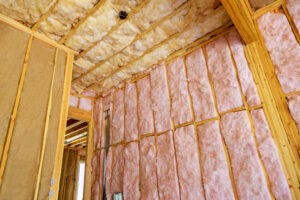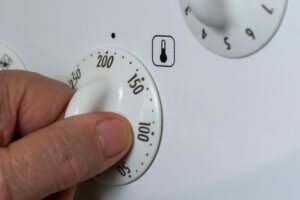Saving Energy Through Energy Efficient Curtains, Shades, and Other Window Coverings
Last updated on March 16th, 2024 at 02:10 pm
By: Robin Green
If your windows are ancient and aren’t doing a passable job of keeping heat inside your home in winter (or keeping it out in warm weather), maybe it is time to consider having new, energy saving windows put in. But new windows, especially good quality energy efficient ones, can be prohibitively expensive. This means that it can take a long time for them to pay for themselves in energy savings. For the amount of cash you would pay to replace the windows in a single big room, you can achieve almost the same energy savings with some basic weather stripping and by using energy efficient window coverings to eliminate heat transfer between your home and the out of doors.
Let’s first review how windows keep the cold out in winter, and the hot out in summer. Windows reduce heat transfer in three ways: convection, conduction, and radiation.
Windows stop or reduce convection airflow between a room and the exterior, blocking heat from passing through the window along with the airflow. A leaky window, or one with cracks in the glass or broken putty, allows air through these openings, so heat gets out in winter, and heat sneaks in during hot weather.
Even the thinnest sheet of glass has some insulating properties, but if the glass is double-glazed and the space between the panes is an inert gas such as argon, the panes provide extra insulating value, which reduces heat transfer through conduction. Conduction is the type of heat transfer that causes the metal handle of a pot to heat up when you boil water in the pot; so you can imagine that a metal window frame, if not properly built, can conduct a lot of heat. Although you can’t readily add extra glass panes to a window, there are other techniques to create extra still air spaces between the window glass and the room, which will increase insulation and reduce conduction transfers.
Radiation, the third type of heat transfer, usually happens when sunlight in the infrared spectrum travels through windows, heating the air inside, or when infrared radiation inside the room radiates out through the glass. Home energy auditors can actually take infrared photos of a house to illustrate where heat losses are most significant, and windows are often among the greatest sources of heat escaping from houses in winter.
How does knowing about heat transfer through convection, conduction, and radiation help you cut energy losses through your windows?
The first issue to tackle is convection. If your windows have broken panes, get them repaired. If you still have the old wood-framed windows with putty holding the glass in, check the pane for any peeling or missing putty. It’s fairly straightforward to pry cracked putty out with a putty knife and put a fresh layer on in its place. If the wood of the window itself is rotten, or if the glass is hard to get out for replacing, you may not be able to avoid getting new windows, but if you can cut the minor air leaks, you’ll have accomplished a lot towards minimizing energy losses and should feel some relief in your heating and cooling bills.
You might be surprised to know how much heat can travel out of a house in winter through the wood trim around a window. Just wait for a really cold day, put all the exhaust fans on in your house( kitchen range vent, bathroom exhaust fans, etc.), and run your fingers along the edges of window and exterior door trim on the inside of rooms. Anywhere you feel cold air coming in, you have a draft that should be sealed. It probably doesn’t hurt to run a thin bead of clear or white caulking around window and door frames to cut this convection heat transfer.
The final thing to try to minimize convection heat losses is to use tape-on or Zip-Loc type window kits to close off any windows that are very drafty, or windows that really should be replaced but that can’t be replaced because of your budget (or because you are renting the place). These window insulation kits are a good way to rapidly cut your heating losses in winter: the kits normally come with several sheets of 3 by 5 foot clear plastic, and a roll of double sided tape. (If you have many windows to cover you should purchase a 48″ roll of the plastic and get the tape separately as you’ll pay far less than buy buying several kits.) You measure and cut plastic rectangles slightly bigger than the window, run the tape around the window frame, remove the protective tape from the double sided tape, and then place the cut plastic over the window, sealing along the tape line. Blow dry the window plastic for five minutes, and it shrinks to form a tight, flat extra pane of ‘glass’ that is practically unnoticeable. This plastic can hold its flat shape for weeks, although you may find it needs an occasional short blow dryer blast to pull up the odd wrinkle in the plastic.
The next problem you’ll want to tackle is conduction – heat being drawn through the solid materials of the window. In terms of energy saving window coverings, your goal here isn’t really to stop this conduction – you can’t usually change the materials the window is made of – but to add barrier layers between the window and the room to slow that conduction down. The plastic window insulation kits stop convection heat loss by eliminating drafts into the room, but they also eliminate conduction, by providing a layer of still air between the room and the window. A curtain can accomplish a similar task: when closed, the curtain traps a small amount of air between the curtain and the window, so that on a cold day the air behind the curtain naturally gets cold but the room itself stays cozy.
When you put curtains on a window to reduce conduction heat transfer, you need to consider convection currents within the living area. Hot air rises, and cold air falls, so if you install curtains you should ensure that the air currents are blocked, preferably at both the top and bottom of the curtain or blind. Otherwise, in cold weather, the cold window will cool the air between the window and the window covering, and that colder air will fall down onto the floor, drawing warm air from above the window covering down in front of the window in a continuous cycle. In summer, the flow runs backwards, with the air between the curtain and the window warming from sunlight, flowing up out the top opening, and drawing cool room air up towards the glass where it gets heated.
You can stop these air flows by having the window covering flush with the wall at the top and bottom, or by having the bottom touch the floor and by closing in the curtain rod area at the top.
If you have cloth blinds that cover the window frame, you can use Velcro tabs along the sides of the blinds that you then press into Velcro tape along the window frame; this completely seals the air space between the window and the blind, providing an excellent insulation barrier. Cloth blinds as well as curtains can use a similar technique but with magnetic tape in the fabric, and metal along the framing, so that the window covering sticks to the walls on either side of and below the opening.
Another method you can try to add an insulation barrier to conduction through the window is to buy cellular blinds, which are made in a honeycomb or cellular cross section, or other blinds that incorporate a hollow space within the blind (for example, air-foil shaped blinds). Cellular blinds when fully retracted take up almost no space and the cells are empty; when extended, they can add insulating value from R-2 (for single-cell blinds) to R-5 (for double-cell).
Window blinds can help address the third type of heat transfer, radiation, by preventing heat from radiating across the window pane (into the house from sunshine in summer, and towards the outside from the radiant heat inside in winter). The most effective blinds use light, reflective colors on the outside, so that sunlight is more or less completely reflected away from the room. Good blinds can reflect enough solar energy away from the window to reduce heat transfer by up to 45%, but they do very little to the R-value of the window, so have little effect in winter.
Roller shades, which have a spring mechanism and can be pulled up or down (we used to call these blinds when I was young) are a great barrier against radiation, and also provide good insulation to reduce convection air flows around the window that lead to conduction losses through the pane or frame. Roller shades, because they are placed so close to the glass, are better at reducing convection currents, especially if their sides and bottom are attached to the window frame (for example, by using side tracks). Unsecured shades can cut heat exchange by as much as 28%, while secured-edge shades cut it up to 45%. Shades that can be reversed, with one side dark and the other light, are ideal, because the light side can reflect the heat where you want it (outside in summer, inside during winter).
Awnings and overhangs are a good way to cut direct light from entering a room and heating it up in summer. Because the solar angle is lower in the winter, these window coverings only block the sunlight you don’t want, letting the lower-angled winter sun warm your home.
Storm windows – which are found on many older homes – can be up to 50% more energy efficient than single-pane windows, provided the storms are sealed against drafts. So if you have old wood-framed storms sitting around in your basement or garage, you should use them each fall and take them down once winter has passed. If you have aluminum framed storms you can typically leave them up all year long; just don’t forget to close the glass during the winter.
Windows make up such a small percentage of the surface area of a home, yet they are among the biggest potential sources of energy waste in a house being heated or air conditioned. So it’s important to do anything you can to limit heat exchange through convection, conduction, and radiation. Just remember to set aside a portion of the money you save on lowered utility bills, so you can replace any worn-out, leaky windows with new, energy efficient ones when the time comes.
About the Author
Robin Green owns Green-Energy-Efficient-Homes.com, a website that helps people find ways to use less energy at home. For more on energy saving window coverings, see Energy saving window coverings on Green Energy Efficient Homes.
(ArticlesBase SC #744539)
Article Source: http://www.articlesbase.com/ – Saving Energy Through Energy Efficient Curtains, Shades, and Other Window Coverings



I agree that windows make up such a small percentage of the surface area of a home, yet they are among the biggest potential sources of energy waste in a house being heated or air conditioned. With the use of window tints, you can instantly make your window energy-efficient and eco-friendly. http://www.TintBuyer.com. can help you find window film that converts inefficient windows to efficient windows that would actually cost less. TintBuyer.com is a comprehensive window film services company offering FREE information to consumers. It is the mission of TintBuyer.com to improve the consumer’s experiences and the window film industry’s reputation through accurate technical information package in an understandable way.